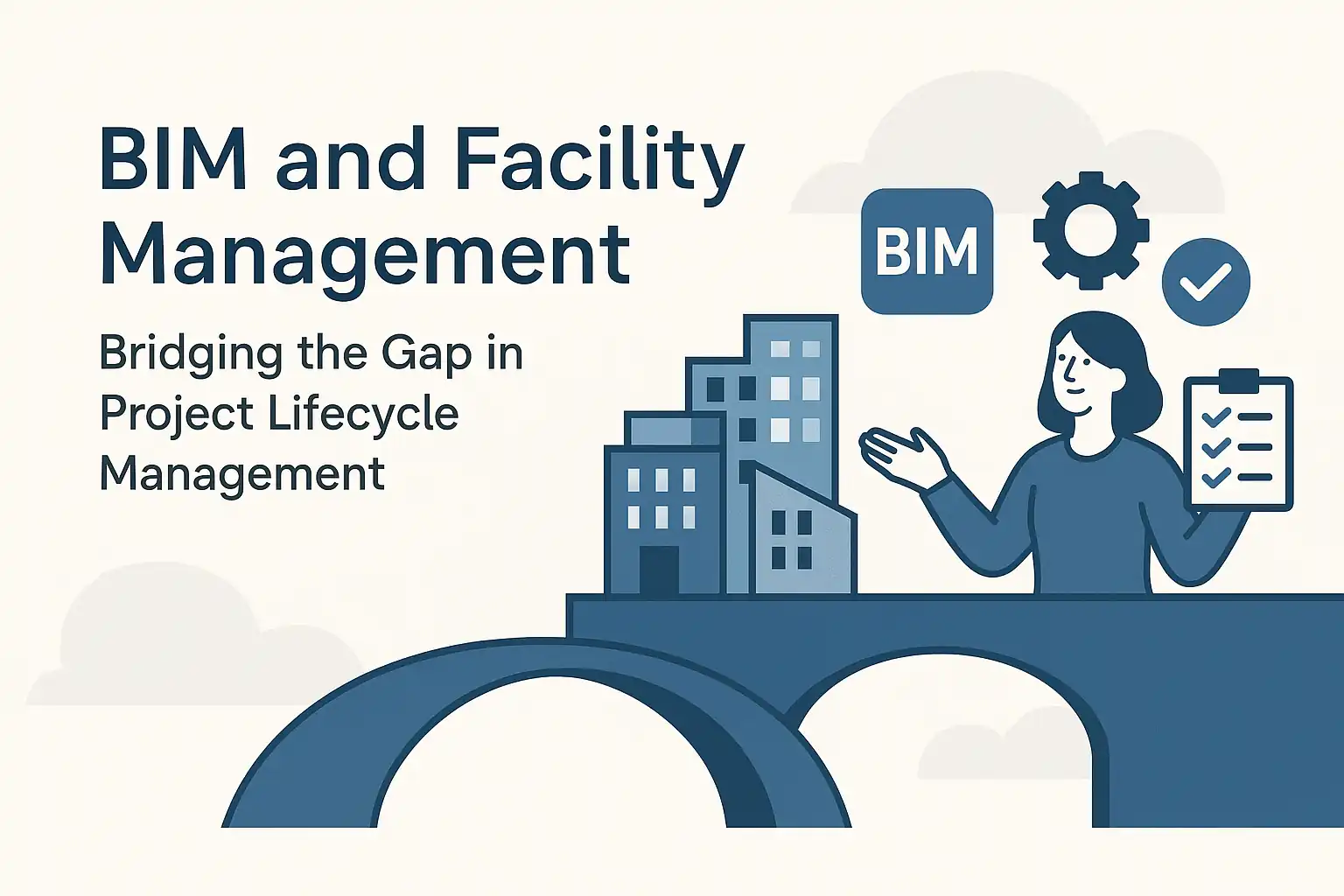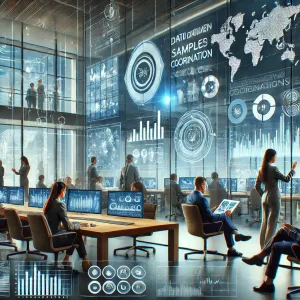Introduction
Building Information Modeling (BIM) has revolutionized the construction industry by providing a digital representation of physical and functional characteristics of facilities. This innovative approach not only enhances the design and construction phases but also plays a crucial role in facility management, bridging the gap between project delivery and ongoing operations.
Definition of BIM
BIM, or Building Information Modeling, is a process that involves the generation and management of digital representations of physical and functional characteristics of places. It encompasses a range of tools and technologies that allow for the creation of a comprehensive 3D model that integrates various aspects of a building, including architecture, engineering, and construction details. This model serves as a shared knowledge resource, facilitating collaboration among stakeholders throughout the project lifecycle.
Overview of the Project Lifecycle
The project lifecycle typically consists of several key phases: design, construction, and facility management. Each phase is interconnected, with information flowing from one stage to the next. During the design phase, architects and engineers create detailed plans and models. The construction phase involves the actual building process, where these plans are executed. However, the lifecycle does not end with construction; effective facility management is essential for maintaining the building’s functionality and efficiency over time. This phase includes operations, maintenance, and eventual renovation or decommissioning of the facility.
Importance of Integrating BIM into Facility Management
Integrating BIM into facility management is vital for several reasons:
- Enhanced Data Accessibility: BIM provides facility managers with easy access to critical information about the building’s systems, materials, and maintenance schedules. This accessibility allows for more informed decision-making and efficient operations.
- Improved Collaboration: By using a shared BIM model, facility managers can collaborate more effectively with other stakeholders, including architects, engineers, and contractors. This collaboration ensures that everyone is on the same page regarding the building’s specifications and maintenance needs.
- Lifecycle Cost Management: BIM enables facility managers to analyze the long-term costs associated with building operations. By understanding the lifecycle of various components, managers can make strategic decisions that optimize maintenance and reduce overall expenses.
- Sustainability and Efficiency: With BIM, facility managers can implement strategies that enhance energy efficiency and sustainability. The detailed data provided by BIM allows for better monitoring of energy usage and identification of areas for improvement.Understanding BIM: A Brief Overview
Understanding BIM: A Brief Overview
Building Information Modeling (BIM) has revolutionized the construction industry, extending its influence well beyond the initial phases of design and construction into the realm of facility management. This section provides foundational knowledge about BIM, highlighting its evolution, key components, and how it contrasts with traditional Computer-Aided Design (CAD) methodologies.
The Evolution of BIM Technology in Construction
- Historical Development: BIM technology has evolved significantly since its inception in the 1970s. Initially, it was primarily used for 2D drafting, but advancements in software and computing power have enabled the transition to 3D modeling and beyond. Today, BIM encompasses a comprehensive digital representation of physical and functional characteristics of facilities, facilitating better decision-making throughout the project lifecycle.
- Integration with Project Lifecycle: BIM is not just a tool for architects and engineers; it integrates various aspects of project management, including planning, design, construction, and operation. This holistic approach allows for improved collaboration among stakeholders, leading to enhanced efficiency and reduced costs.
Key Components and Functionalities of BIM
- 3D Modeling: At its core, BIM utilizes 3D models to represent the physical attributes of a building. These models include detailed information about materials, dimensions, and spatial relationships, allowing for accurate visualizations and simulations.
- Data Management: BIM systems store vast amounts of data related to the building’s lifecycle, including maintenance schedules, energy performance, and occupancy patterns. This data can be accessed and analyzed by facility managers to optimize operations and maintenance strategies.
- Collaboration Tools: BIM facilitates collaboration among various stakeholders through shared models and cloud-based platforms. This ensures that all parties, from architects to facility managers, have access to the most current information, reducing the likelihood of errors and miscommunication.
- Lifecycle Management: BIM supports facility management by providing tools for tracking and managing assets throughout their lifecycle. This includes features for scheduling maintenance, managing space utilization, and analyzing building performance metrics.
How BIM Differs from Traditional CAD Methodologies
- Dimensionality: Traditional CAD primarily focuses on 2D drawings and basic 3D models, which often lack the depth of information required for effective project management. In contrast, BIM encompasses a multidimensional approach, integrating 3D models with time (4D), cost (5D), and operational data (6D), providing a more comprehensive view of the project.
- Information-Rich Models: While CAD drawings are static representations, BIM models are dynamic and information-rich. They contain metadata that can be updated in real-time, allowing for better tracking of changes and facilitating more informed decision-making.
- Collaboration and Interoperability: Traditional CAD systems often operate in silos, making collaboration challenging. BIM promotes interoperability among different software platforms, enabling seamless data exchange and collaboration among various stakeholders, which is crucial for successful project execution and facility management.
The Role of Facility Management in Project Lifecycle
Facility management (FM) plays a crucial role in the overall project lifecycle, particularly in the context of Building Information Modeling (BIM). As projects evolve from design and construction to operation and maintenance, the integration of FM practices ensures that facilities are not only built efficiently but also managed effectively throughout their lifespan. Here’s a closer look at the definition, responsibilities, and significance of facility management in project success.
Definition and Scope of Facility Management
Facility management is a multidisciplinary field that encompasses the management of buildings and their services. It involves the coordination of people, processes, and technology to ensure that facilities operate efficiently and effectively. The scope of facility management includes:
- Space Management: Optimizing the use of space within a facility to enhance productivity and comfort.
- Maintenance Management: Overseeing the upkeep of building systems and infrastructure to ensure safety and functionality.
- Sustainability Practices: Implementing strategies to reduce environmental impact and promote energy efficiency.
- Safety and Compliance: Ensuring that facilities meet regulatory standards and safety protocols.
By integrating these elements, facility management contributes to the overall functionality and sustainability of a building, making it a vital component of the project lifecycle.
Key Responsibilities of Facility Managers
Facility managers are tasked with a variety of responsibilities that are essential for the smooth operation of a facility. Some of their key duties include:
- Operational Oversight: Managing day-to-day operations, including maintenance, security, and cleaning services.
- Budget Management: Developing and managing budgets for facility operations and maintenance, ensuring cost-effectiveness.
- Vendor Coordination: Collaborating with contractors and service providers to ensure quality service delivery.
- User Experience Enhancement: Focusing on the needs of occupants to create a safe, comfortable, and productive environment.
- Data Management: Utilizing technology and data analytics to inform decision-making and improve facility performance.
These responsibilities highlight the strategic role that facility managers play in ensuring that a facility meets the needs of its users while also aligning with organizational goals.
Importance of Effective Facility Management in Project Success
Effective facility management is critical to the success of any project for several reasons:
- Lifecycle Cost Efficiency: By implementing proactive maintenance and management strategies, facility managers can significantly reduce long-term operational costs, ensuring that the facility remains within budget throughout its lifecycle.
- Enhanced User Satisfaction: A well-managed facility leads to improved occupant satisfaction, which can enhance productivity and reduce turnover rates.
- Risk Mitigation: Effective FM practices help identify and mitigate risks associated with facility operations, including safety hazards and compliance issues.
- Sustainability Goals: Facility managers play a key role in achieving sustainability objectives, which are increasingly important in today’s construction and operational practices.
BIM’s Transition from Construction to Facility Management
Building Information Modeling (BIM) has revolutionized the construction industry, but its benefits extend far beyond the construction phase, significantly enhancing facility management. This section explores how BIM is utilized during the facility management phase, focusing on the handover process, real-time data access, and successful case studies.
The Handover Process: Transferring BIM Data from Construction to Facility Management
The transition from construction to facility management is critical, and effective handover processes are essential for ensuring that facility managers have the necessary information to operate and maintain the building efficiently. Key aspects of this process include:
- Comprehensive Data Transfer: During the handover, all relevant BIM data, including architectural, structural, and MEP (mechanical, electrical, plumbing) information, is transferred to facility management teams. This data serves as a digital twin of the building, providing a detailed representation of its components and systems.
- Standardized Formats: Utilizing standardized formats for data transfer, such as Industry Foundation Classes (IFC), ensures compatibility and accessibility of information across different software platforms used in facility management.
- Training and Support: Providing training for facility managers on how to utilize BIM tools effectively is crucial. This ensures that they can leverage the data for maintenance, operations, and future renovations.
Real-Time Data Access and Building Maintenance
One of the most significant advantages of BIM in facility management is the ability to access real-time data, which enhances decision-making and operational efficiency. Key points include:
- IoT Integration: Integrating Internet of Things (IoT) devices with BIM allows for real-time monitoring of building systems, such as HVAC, lighting, and security. This integration enables facility managers to receive alerts about system performance and maintenance needs, facilitating proactive management.
- Predictive Maintenance: With access to historical data and real-time analytics, facility managers can implement predictive maintenance strategies. This approach minimizes downtime and extends the lifespan of building systems by addressing issues before they escalate into costly repairs.
- Enhanced Communication: BIM facilitates better communication among stakeholders, including facility managers, maintenance teams, and service providers. This collaboration ensures that everyone is informed about the building’s status and any ongoing maintenance activities.
Benefits of Using BIM in Facility Management
Building Information Modeling (BIM) has revolutionized the construction industry, but its benefits extend far beyond the initial phases of a project. For facility managers and project managers, integrating BIM into facility management practices can lead to significant advantages throughout the lifecycle of a building. Here are some key benefits:
- Improved Operational Efficiency and Reduced Costs: BIM provides a comprehensive digital representation of a facility, which allows for better planning and management of resources. By utilizing BIM, facility managers can streamline operations, leading to reduced downtime and maintenance costs. The ability to visualize systems and components in a 3D environment enables proactive maintenance and efficient space management, ultimately resulting in cost savings over time.
- Enhanced Collaboration Among Stakeholders: One of the standout features of BIM is its ability to foster collaboration among various stakeholders, including architects, engineers, contractors, and facility managers. With a shared digital model, all parties can access the same information, reducing misunderstandings and miscommunications. This collaborative approach ensures that everyone is on the same page, facilitating smoother transitions from construction to operation and enhancing overall project outcomes.
- Better Decision-Making Through Data Analysis and Visualization: BIM allows facility managers to leverage data analytics and visualization tools to make informed decisions. By analyzing data related to building performance, energy usage, and maintenance schedules, managers can identify trends and areas for improvement. The visual representation of data helps in understanding complex information quickly, enabling timely and effective decision-making that can enhance the building’s operational performance.
Challenges of Implementing BIM in Facility Management
Building Information Modeling (BIM) has revolutionized the construction industry, but its integration into facility management presents unique challenges that facility managers and project managers must navigate. Understanding these obstacles is crucial for successful implementation and maximizing the benefits of BIM throughout the project lifecycle. Here are some key challenges to consider:
- Resistance to Change and Training Requirements: One of the most significant hurdles in adopting BIM for facility management is the inherent resistance to change within organizations. Many facility managers and staff may be accustomed to traditional methods of managing facilities, making them hesitant to embrace new technologies. This resistance can stem from a lack of understanding of BIM’s benefits or fear of the unknown. Additionally, comprehensive training is essential to ensure that all team members are proficient in using BIM tools and processes. Without adequate training, the potential of BIM may not be fully realized, leading to underutilization of the technology.
- Interoperability Issues with Existing Systems: Facility management often relies on a variety of software systems for operations, maintenance, and asset management. One of the challenges of implementing BIM is ensuring that it can effectively integrate with these existing systems. Interoperability issues can arise when different software platforms do not communicate seamlessly, leading to data silos and inefficiencies. Facility managers must carefully evaluate the compatibility of BIM tools with their current systems and consider the potential need for additional investments in software or middleware to facilitate integration.
- Cost Implications of Adopting New Technology: While BIM can lead to long-term savings and efficiencies, the initial costs associated with its implementation can be a significant barrier for many organizations. These costs may include software licensing fees, hardware upgrades, and the expenses related to training staff. Facility managers must conduct a thorough cost-benefit analysis to justify the investment in BIM technology. Additionally, they should consider the potential return on investment (ROI) that BIM can provide through improved operational efficiency, reduced maintenance costs, and enhanced decision-making capabilities.
Future Trends in BIM and Facility Management
Building Information Modeling (BIM) is revolutionizing the way facility management is approached, extending its influence well beyond the construction phase. As the industry evolves, several key trends are emerging that highlight the future of BIM in the context of facility management. Here are some insights into these trends:
1. Emerging Technologies Enhancing BIM Capabilities
- Internet of Things (IoT): The integration of IoT with BIM is set to transform facility management by enabling real-time data collection and analysis. Sensors embedded in building systems can provide facility managers with critical information about energy usage, occupancy levels, and equipment performance. This data can be visualized within the BIM framework, allowing for proactive maintenance and operational efficiency.
- Artificial Intelligence (AI): AI technologies are increasingly being utilized to analyze the vast amounts of data generated by BIM and IoT systems. Predictive analytics can help facility managers anticipate maintenance needs, optimize resource allocation, and improve decision-making processes. AI can also enhance user experience by personalizing building environments based on occupant preferences and behaviors.
2. Sustainability and Green Building Initiatives Supported by BIM
- Energy Efficiency: BIM plays a crucial role in supporting sustainability initiatives by enabling facility managers to model energy consumption and identify areas for improvement. By simulating different scenarios, managers can make informed decisions about energy-efficient upgrades and retrofits, ultimately reducing the building’s carbon footprint.
- Lifecycle Assessment: BIM facilitates comprehensive lifecycle assessments, allowing facility managers to evaluate the environmental impact of materials and systems throughout the building’s lifespan. This capability supports green building certifications and helps organizations meet regulatory requirements for sustainability.
- Waste Reduction: By improving project planning and coordination, BIM can significantly reduce waste during both construction and operation phases. Facility managers can leverage BIM to optimize space utilization and streamline maintenance processes, contributing to a more sustainable built environment.
3. The Future Role of Facility Managers in a BIM-Centric Environment
- Data-Driven Decision Making: As BIM becomes more integrated into facility management, the role of facility managers will increasingly focus on data analysis and interpretation. Managers will need to be adept at using BIM tools to extract insights that inform strategic decisions regarding building operations and maintenance.
- Collaboration and Communication: Facility managers will play a pivotal role in fostering collaboration among various stakeholders, including architects, engineers, and contractors. A BIM-centric approach encourages a shared understanding of building systems and facilitates communication, leading to more efficient project delivery and management.
- Continuous Learning and Adaptation: The rapid advancement of BIM technologies necessitates that facility managers engage in continuous learning to stay abreast of new tools and methodologies. Embracing a culture of innovation will be essential for adapting to the evolving landscape of facility management.
Conclusion
In conclusion, the integration of Building Information Modeling (BIM) into facility management represents a significant advancement in project lifecycle management. As we have explored, BIM offers numerous benefits that extend well beyond the construction phase, fundamentally transforming how facility managers and project managers operate. Here are the key takeaways:
- Enhanced Operational Efficiency: BIM provides a centralized digital representation of a facility, allowing for improved data management and streamlined operations. This leads to more efficient maintenance schedules, reduced downtime, and better resource allocation, ultimately enhancing the overall performance of the facility.
- Improved Collaboration and Communication: By utilizing BIM, facility managers can foster better collaboration among stakeholders. The shared access to real-time data and visualizations facilitates clearer communication, ensuring that all parties are aligned and informed throughout the facility’s lifecycle.
- Informed Decision-Making: With BIM, facility managers can leverage data analytics to make informed decisions regarding maintenance, upgrades, and space utilization. This data-driven approach not only helps in optimizing operational costs but also enhances the longevity and sustainability of the facility.
- Future-Proofing Facilities: As technology continues to evolve, BIM equips facility managers with the tools necessary to adapt to new advancements. Staying updated with BIM technologies ensures that facilities remain competitive and capable of meeting future demands.
As we move forward, it is crucial for facility and project managers to embrace BIM as a vital component of their operational strategy. By doing so, they can unlock the full potential of their facilities, ensuring they are not only well-managed but also prepared for the challenges of tomorrow.
We encourage all facility and project managers to stay informed about the latest advancements in BIM and best practices. Engaging with ongoing training, attending industry conferences, and participating in professional networks can provide valuable insights and keep you at the forefront of this transformative technology. Embrace BIM today to enhance your facility management practices and drive success in your projects.
Find out more about Shaun Stoltz https://www.shaunstoltz.com/about/.
This post was written by an AI and reviewed/edited by a human.



